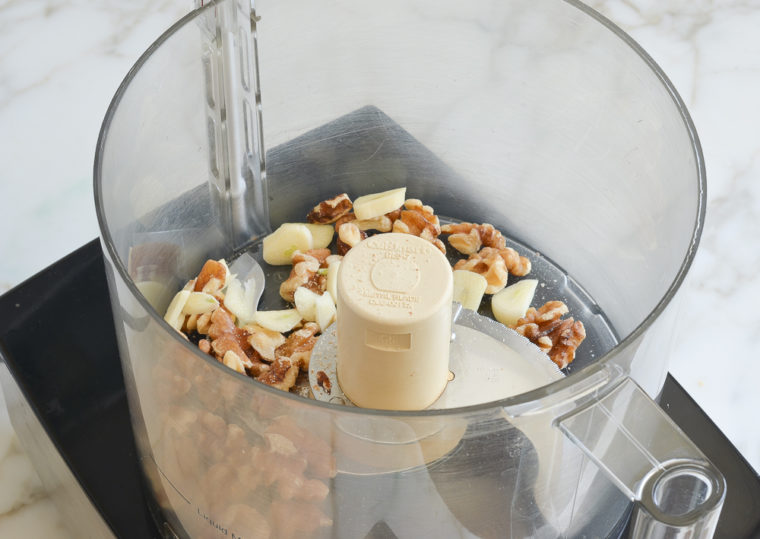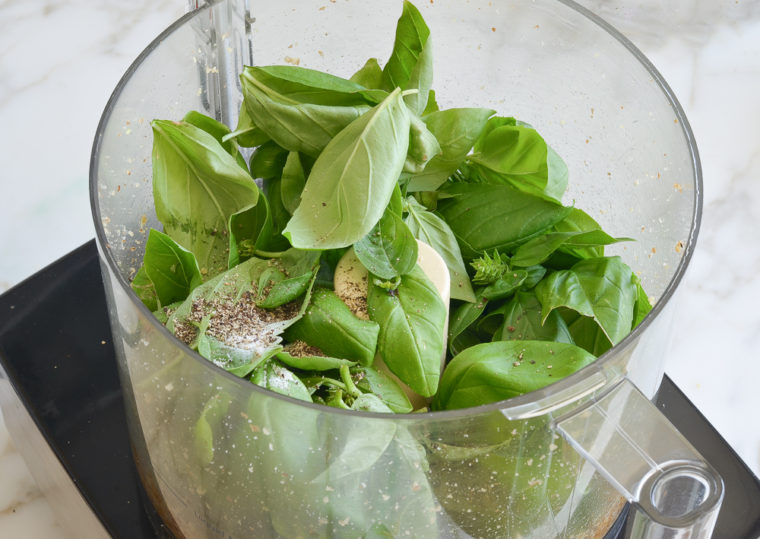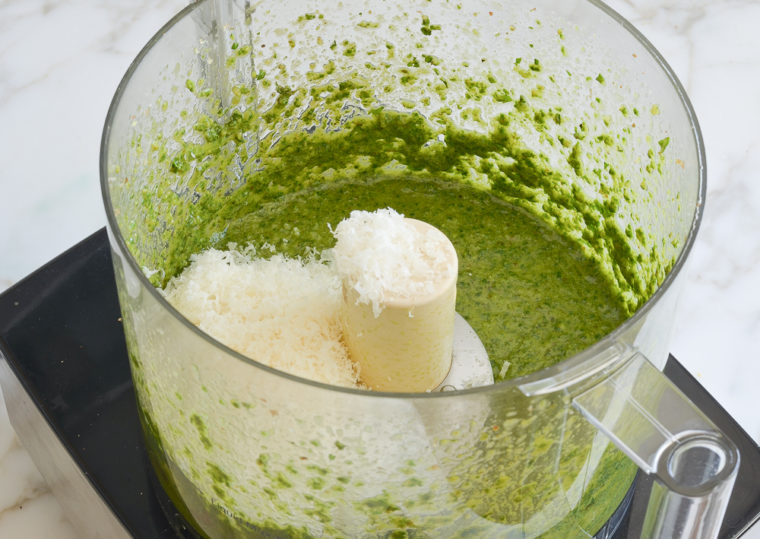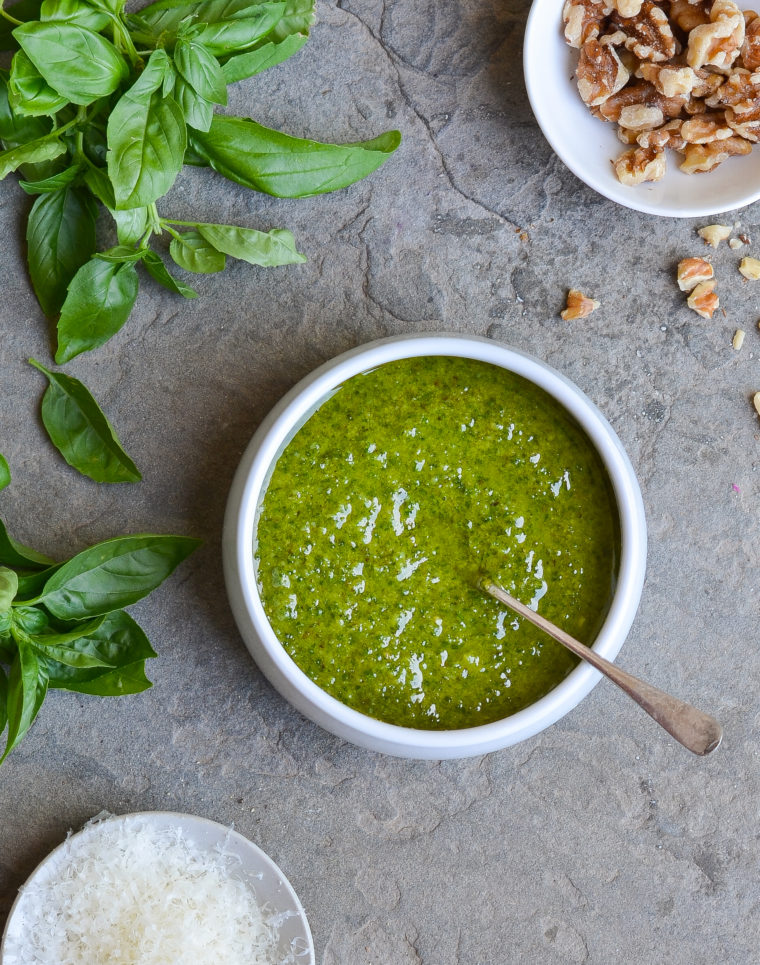Homemade pesto sauce is easy to make, and it’s good on just about everything, from pastas to pizzas to salads.
Homemade pesto sauce is easy to make, and it’s good on just about everything, from pastas to pizzas to salads.
One of my favorite things about summer cooking is stepping out my back door to pick fresh herbs from my potted herb garden. It always amazes me how the tiny seedlings I plant in May grow into more herbs than I can possibly use up in August. Right now, my basil plant is overflowing, which means it’s time to make pesto sauce. Pesto, or pesto alla genovese, is a vibrant, garlicky green sauce that originated in Genoa, Italy. It’s traditionally made with a mortar and pestle, but most modern versions call for using a food processor. Pesto is a versatile sauce that can be used on just about everything, from pastas to sandwiches to salads. It freezes well, too.
What You’ll Need To Make Pesto Sauce
Traditional pesto is made with garlic, nuts, salt, basil leaves, Parmigiano-Reggiano, and extra-virgin olive oil. It’s important to use top-quality ingredients, as the flavors really shine through.

For the cheese, be sure to use authentic Parmigiano-Reggiano from Italy; domestic Parmesan is not the same thing. You can always tell if the cheese is authentic by looking at the rind, which is embossed with the name over and over. If the cheese is already grated, it should be labeled “Parmigiano-Reggiano,” not “Parmesan.”
For the nuts, I use walnuts instead of the more traditional pine nuts for a few reasons. First, I always seem to have walnuts in the house (pine nuts can be very pricey). Second, in recent years an increasing number of people, including me, have fallen prey to a bizarre problem with pine nuts called Pine Mouth Syndrome, a bitter, metallic taste in the mouth that develops a day or two after eating pine nuts. It can last for weeks and make eating or drinking anything very unpleasant. (You can use pecans or almonds, too.)
Step-by-Step Instructions

To begin, combine the walnuts and garlic in the bowl of a food processor and pulse until coarsely chopped.

Add the basil leaves, salt, and pepper.

Process until finely chopped.

Then, with the food processor running, add the olive oil through the feed tube in a steady stream.

Add the Parmigiano-Reggiano.

Process again until smooth, and that’s your pesto sauce.

How To Store & Freeze Pesto
Use the pesto immediately or store it in a tightly sealed jar or air-tight plastic container, covered with a thin layer of olive oil (this seals out the air and prevents the sauce from oxidizing, which would turn it an ugly brown color). It will keep in the refrigerator for about a week.
Pesto can also be frozen in an airtight container for up to 6 months. I suggest dividing it into the compartments of an ice cube tray and freezing. Once frozen, remove the cubes from the tray and put in a sealable plastic bag or airtight container. You can add the defrosted cubes to summer vegetable soup, pasta salad with pesto, zucchini noodles, pesto pizza, eggs, sandwiches, and baked potatoes.

Note: This recipe has been written by Jenn Segal and republished on MudMatter with Author’s Permission. Please find the original link here – Pesto Sauce.
Notice Inappropriate?
If you come across any inappropriate content, please report it to our administrators!





